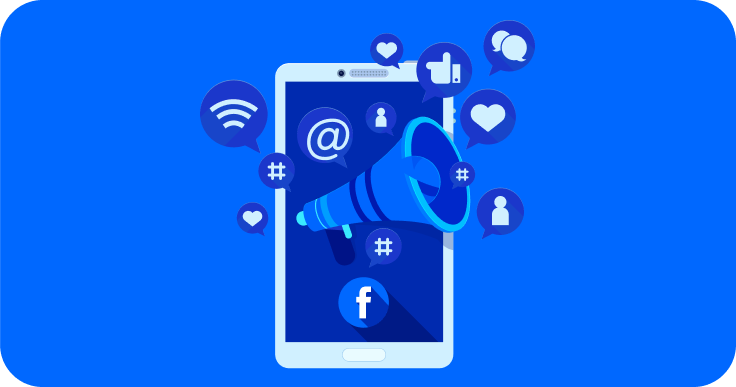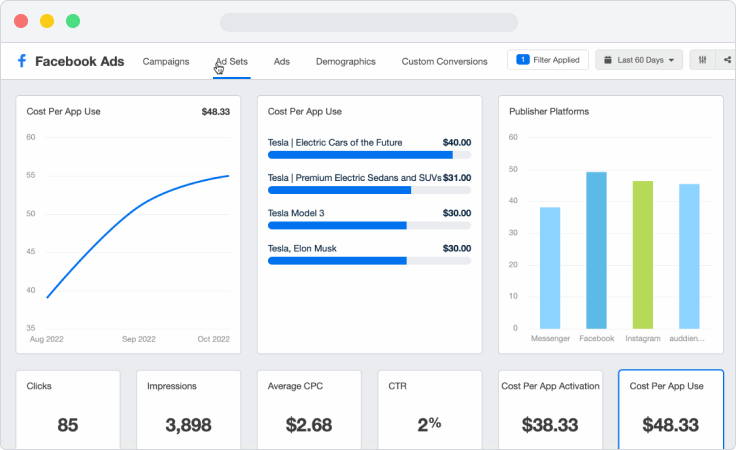
Get upto 50% off in New Year Offer

Get upto 50% off in New Year Offer

With a new year rolling around, it’s time to take stock of your Facebook advertising strategy and make sure you are set up to capitalize on the latest trends beckoning on the platform. In 2024, Facebook ads will continue to be an essential aspect of digital marketing. However, to make the best use of your budget, you must keep track of algorithm changes, targeting options, creative formats, and more.
In this post, we will discuss all you need to know to develop a strong Facebook advertising plan for 2024. From creating your Facebook ads manager to enhancing campaigns, we’ll offer professional advice for accessing the full potential of this platform.
By the end, you’ll have all you need to turbo-charge your Facebook marketing strategy in the new year.
First of all, one should be aware of the significant trends that will shape Facebook advertising throughout this year. Being aware of these shifts will enable you to adjust your strategy accordingly.
By observing these high-level changes, you will better equip yourself to adjust your Facebook advertising strategy throughout the year.
Also Read | 15 Best SEO GPT to assist you in ranking higher 2024

The first step is making sure your Facebook ads manager is configured correctly. Here are the key account components to establish:
Take time to optimize these account settings fully. Also, install the Facebook pixel on your website to unlock powerful insights and retargeting options. With the proper infrastructure in place, you’ll be ready to optimize the rest of your strategy.

The first step is to outline your goals for the Facebook ad campaign and assign key performance indicators that will measure success. Your goals will depend on your business objectives, but common KPIs for Facebook ads include the following:
Set tangible, quantitative targets for every goal. For example, if your objective is to come up with 100 new leads over the next 30 days at a cost of $2 or less per lead. Quantifying goals from the very beginning gives a means of measuring campaign success.

Targeting is arguably the most important factor for Facebook’s advertising success. Take advantage of the platform’s powerful targeting options to reach precisely the right people.
Start by analyzing your ideal customer persona. Define traits like demographics, interests, behaviors, and locations most relevant to your offerings. Then, leverage these characteristics to build tight, relevant audiences.
Test various audience combinations to see which drives the highest engagement and conversion rates. As you collect more data, refine targets for even better performance over time. Proper targeting is key to optimizing costs and ROI.

Your creative assets can be counted among the primary triggers of determining whether individuals will actually interact with your Facebook ads.
Some best practices include
Testing should not be discounted, either. Measure what works best for your target groups.
Also, include cultural waves and holiday or seasonal issues where appropriate. Proper creative testing and optimization will allow you to maximize your performance metrics.
Also Read | What Is Facebook Automation? : Tools, Software, Benefits and More
Facebook pixel is one of the most valuable tools. It can provide insights you need to increase your campaign’s ROI exponentially. Here are some key ways to leverage it effectively:
The pixel helps you close more sales, increase average order values, and decrease costs over time. To start with, focus on the optimization of this powerful tracking tool.

By 2024, AI and automation will increasingly be used to optimize Facebook’s marketing strategy as technology continues to develop. Use these features to streamline processes and optimize your ROI.
You keep testing, and your Facebook advertising will become self-optimizing. Don’t hesitate to experiment with unverified methods either – often, the process of discovery results in innovation.

Any successful Facebook marketing strategy is based on ongoing optimization. Systems for measuring your actions and refining them on a regular basis.
With rigorous testing and fine-tuning, your Facebook ads will become smarter with time. Focus on learning through iteration and constant improvement.
Facebook serves as an excellent platform for brands looking to reach out to new customers online. There are several ways of keeping the posts fresh. Some businesses even repurpose their content to develop a sense of community among the audience.
Here are some of the different post types brands must use on Facebook.
Text-based updates do not always prove to be effective for brands but they use it in certain instances. Text posts are great for getting community feedback and encouraging interactions.
It is the most effective form of posting for any brand on Facebook. These create excellent engagement in comparison to any other form of content. Videos engage not only engage large number of audience but alos are highly shareable.
The first few seconds of a video are the most crucial for attracting prospects. Also, brands have more flexibility in terms of the length of the video.
Another effective form of posting on Facebook is using photographs. It is particularly effective for product-based businesses in search of new customers.
These are some of the highest-performing post types on Facebook. Brands can also leverage Facebook Live, pinned posts, stories, etc. to gain a prominent presence among the target audience.
By developing a comprehensive yet adaptable Facebook advertising strategy, you’ll be well-positioned to maximize opportunities in 2024. Focus efforts on understanding trends, optimizing your account structure, refining targeting, and creative testing.
Leverage powerful automation and measurement tools as well. Continuous learning and iteration will help ensure your Facebook marketing strategy stays ahead of the competition throughout the new year. Execute effectively, and Facebook ads can supercharge your entire digital presence.

Streamline your marketing efforts with AI-powered working design — Organize, collaborate, and optimize your marketing campaigns all in one place!

Join now to shape the future of MangePlus
Don’t miss out
Content Writing | SEO | SEM